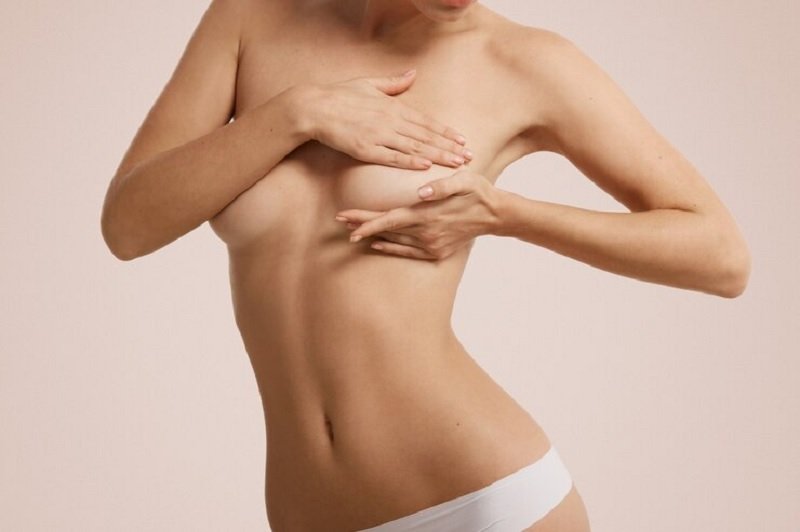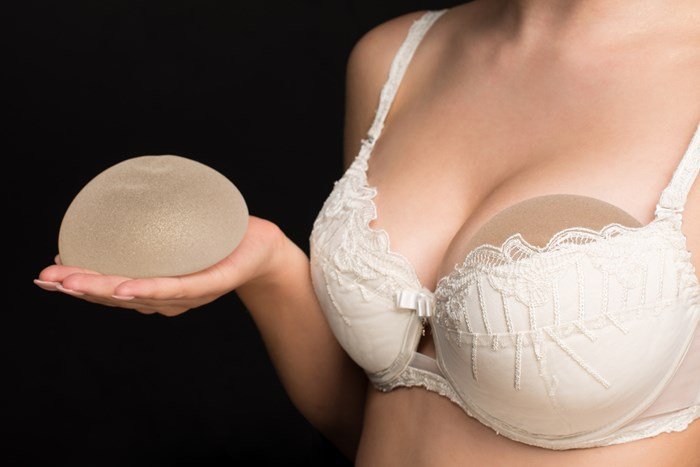Breast Augmentation
Breast augmentation is a cosmetic procedure that aims to increase the size, shape, or symmetry of the breasts. It involves placing implants or fat grafts under the breast tissue or chest muscles. Breast augmentation can enhance one’s appearance, confidence, and self-esteem. It can also correct breast deformities, asymmetries, or volume loss due to pregnancy, weight loss, or aging.
What is Breast Augmentation?
Breast augmentation is a surgical procedure that requires general anesthesia or local anesthesia with sedation. The surgeon makes incisions in inconspicuous areas, such as under the breast fold, around the areola, or in the armpit. The surgeon then creates a pocket behind the breast tissue or chest muscle and inserts the implant or fat graft. The incisions are closed with sutures, tape, or glue. The procedure usually takes one to two hours.Benefits and side effects of breast augmentation

Breast augmentation can have many benefits, such as:
Improving the appearance and proportion of the breasts
Enhancing the balance and harmony of the body
Increasing the options and fit of clothing and bras
Boosting the self-confidence and satisfaction with one’s body image
Restoring the breast shape and volume after pregnancy, breastfeeding, weight loss, or aging
Reconstructing the breasts after mastectomy or injury

However, breast augmentation also has some potential side effects and risks, such as:
Scarring, bruising, swelling, pain, and infection at the incision sites
Capsular contracture, which is the hardening and distortion of the scar tissue around the implant
Breast pain, numbness, or changes in sensation in the nipples or breasts
Implant rupture, leakage, displacement, rippling, or rotation
Need for additional surgery to correct complications or to replace implants over time
Breast implant-associated anaplastic large cell lymphoma (BIA-ALCL), which is a rare type of cancer of the immune system that may develop around textured implants
Breast implant illness (BII), which is a term used by some people who experience systemic symptoms that they believe are related to their implants
Types of breast augmentation
There are two main types of breast augmentation: implant-based and fat transfer.
Implant-based breast augmentation uses silicone or saline implants to increase the size and shape of the breasts. Silicone implants are filled with silicone gel that feels more natural than saline. Saline implants are filled with sterile salt water that can be adjusted during surgery. Implants come in different sizes, shapes, profiles, and textures to suit different preferences and goals.
Fat transfer breast augmentation uses liposuction to harvest fat from other parts of the body, such as the abdomen, thighs, or hips. The fat is then processed and injected into the breasts to add volume and contour. Fat transfer can create a more natural look and feel than implants. However, it may not provide as much enlargement as implants and some of the fat may be reabsorbed by the body over time.
Breast Augmentation
How much does it cost?
The cost of breast augmentation varies depending on several factors, such as:
The type and quality of implants or fat grafts used
The experience and reputation of the surgeon
The location and facility where the surgery is performed
The anesthesia and medication fees
The postoperative care and follow-up visits
How long does the effect of breast augmentation last?
The effect of breast augmentation depends on the type of procedure and individual factors. Implant-based breast augmentation can last for 10 years or more before needing replacement or revision. However, some implants may rupture or leak sooner than others. Fat transfer breast augmentation can last for several years or longer if enough fat survives and integrates with the existing breast tissue. However, some fat may be reabsorbed by the body within a few months or years.
Why we should go to Cyrus Polyclinic for breast augmentation services in Dubai?
Cyrus Polyclinic is a reputable and reliable clinic that offers high-quality breast augmentation services in Dubai. In Cyrus Polyclinic we have a team of experienced and qualified plastic surgeons who can perform both implant-based and fat transfer breast augmentation procedures. Cyrus Polyclinic uses state-of-the-art equipment and techniques to ensure safety and satisfaction for its patients. Cyrus Polyclinic also provides personalized consultation and care for each patient to understand their needs and expectations and to achieve their desired results. In Cyrus Polyclinic we have received positive reviews from its previous clients who have praised its professionalism, expertise, and customer service.
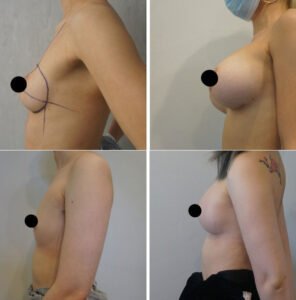

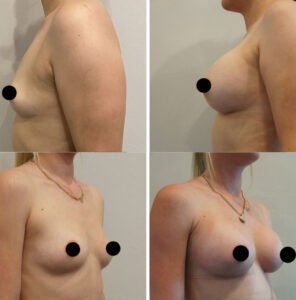
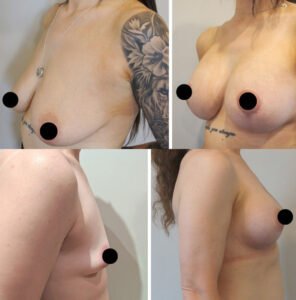

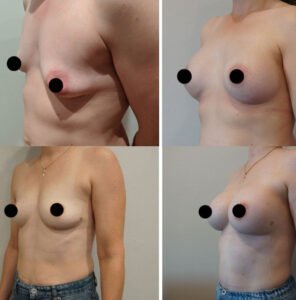


Breast Reduction
A breast reduction, also known as reduction mammaplasty, is a cosmetic surgery procedure that reduces the size and weight of large or heavy breasts by removing excess fat, glandular tissue, and skin. A breast reduction can also reshape and lift the breasts, and reduce the size of the areola, the darker skin around the nipple. A breast reduction can improve the appearance, comfort, and health of women who have disproportionately large breasts.
What is Breast Reduction?
A breast reduction is a surgical procedure that involves making incisions on the breasts, removing excess fat, tissue, and skin, repositioning the nipple and areola, and reshaping the breasts. The incisions may vary depending on the amount of tissue to be removed, the size and shape of the breasts, and the patient’s preferences. The most common types of incisions are:
Around the areola (peri areolar)
Around the areola and vertically down to the breast crease (lollipop)
Around the areola, vertically down to the breast crease, and horizontally along the crease (anchor)
Benefits and Side Effects of Breast Reduction: Some of the benefits of a breast reduction are:
Improved appearance and self-confidence
More proportionate and symmetrical breasts
Relief from physical discomfort and pain caused by large or heavy breasts
Easier to exercise and engage in physical activities
Better fit of clothing and bras Some of the side effects and risks of a breast reduction are:
Scarring, which may fade over time but not disappear completely
Infection, bleeding, hematoma, or seroma
Changes in sensation or numbness in the nipples or breasts
Asymmetry or unevenness in the shape or size of the breasts
Difficulty breastfeeding or reduced milk production
Allergic reaction to anesthesia or medication
Need for revision surgery or additional procedures
Types of Breast Reduction:
There are different types of breast reduction procedures that can be performed depending on the patient’s goals, anatomy, and surgeon’s recommendations. Some of the common types are:
Liposuction: This is a minimally invasive technique that uses a thin tube called a cannula to suction out excess fat from the breasts. This is suitable for women who have mostly fatty tissue in their breasts and do not need much skin removal or lifting. Liposuction can result in less scarring and faster recovery than other methods.
Vertical Reduction: This is also known as a short-scar technique that uses a lollipop-shaped incision around the areola and vertically down to the breast crease. This is suitable for women who have moderate amount of tissue to be removed and need some skin tightening and lifting. Vertical reduction can result in less scarring than an anchor incision but more than liposuction.
Inverted T Reduction: This is also known as a traditional technique that uses an anchor-shaped incision around the areola, vertically down to the breast crease, and horizontally along the crease. This is suitable for women who have large amount of tissue to be removed and need significant skin removal and lifting. Inverted T reduction can result in more scarring than other methods but can achieve more dramatic results.
How Much Does Breast Reduction Cost?
The cost of a breast reduction varies depending on several factors, such as:
The type and extent of the procedure
The surgeon’s experience and reputation
The location and facility where the surgery is performed
The anesthesia and medication fees
How Long Does The Effect Of Breast Reduction Last?
The results of a breast reduction are not permanent, as gravity, aging, weight fluctuations, pregnancy, and breastfeeding can affect the size and shape of the breasts over time. However, some factors that can help maintain the effect of a breast reduction are:
Maintaining a stable and healthy weight
Wearing a supportive bra
Avoiding smoking and sun exposure
Following the surgeon’s instructions and recommendations Generally, a breast reduction can last for 10 to 20 years or longer, depending on the individual’s lifestyle and genetics.
Why We Should Go To Cyrus Polyclinic For Breast Reduction Services In Dubai?
Cyrus Polyclinic is a leading cosmetic surgery center in Dubai that offers high-quality and affordable breast reduction services. Some of the reasons why we should come to Cyrus Polyclinic for breast reduction services in Dubai are:
we have a team of experienced and qualified plastic surgeons who are certified by the American Board of Plastic Surgery and the Royal College of Surgeons of England.
we use the latest technology and equipment to perform safe and effective breast reduction procedures with minimal scarring and downtime.
we provide personalized and comprehensive care to each patient, from consultation to recovery, with utmost respect and confidentiality.
we have a state-of-the-art facility that is accredited by the Dubai Health Authority (DHA).
we offer competitive prices and flexible payment plans to suit different budgets and needs.
What Is The Difference Between Breast Reduction And Breast Augmentation And Breast Implants And Breast Lift?
Breast reduction, breast augmentation, breast implants, and breast lift are different types of cosmetic surgery procedures that can enhance the appearance of the breasts. However, they have different goals and outcomes. Here is a brief comparison of them:
Breast Reduction: A breast reduction aims to reduce the size and weight of large or heavy breasts by removing excess fat, glandular tissue, and skin. A breast reduction can also reshape and lift the breasts, and reduce the size of the areola. A breast reduction can improve the appearance, comfort, and health of women who have disproportionately large breasts.
Breast Augmentation: A breast augmentation aims to increase the size of the breasts by inserting implants under the breast tissue or chest muscle. A breast augmentation can also improve the shape, symmetry, and projection of the breasts. A breast augmentation can be done with saline or silicone implants, which have different advantages and disadvantages.
Breast Implants: Breast implants are artificial devices that are filled with either saline or silicone gel. They are used to augment or reconstruct the breasts. Breast implants come in different shapes, sizes, textures, and profiles to suit different preferences and needs. Breast implants have some risks and complications, such as rupture, capsular contracture, infection, displacement, etc.
Breast Lift: A breast lift aims to raise and reshape sagging or drooping breasts by removing excess skin and tightening the surrounding tissue. A breast lift does not change the size of the breasts or add volume to the upper part of the breasts. A breast lift can improve the position, shape, and contour of the breasts.
Articles About Breast Augmentation
The Complete Guide to Breast Augmentation: Enhancing Confidence and Contour
-
Posted by
admin
- 0 comments

